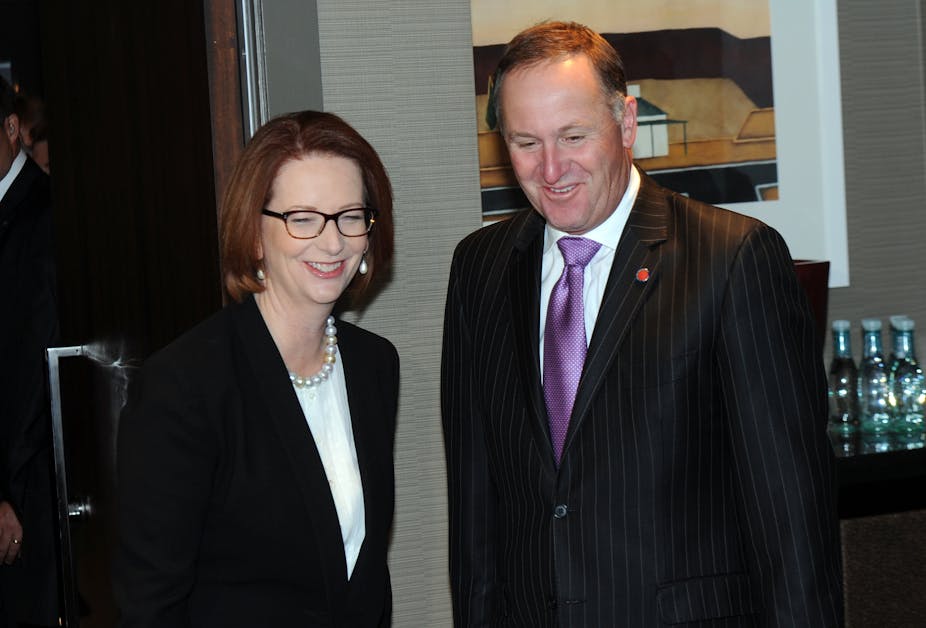There are more than 600,000 New Zealand citizens in Australia, around 500,000 of whom were born in New Zealand.
Prior to 2001, the Australian and New Zealand governments allowed citizens to move freely across the Tasman and to enjoy the privileges of citizenship each country offered.
Since 2001 the Australian government has denied New Zealand citizens the status of permanent resident (and access to citizenship) unless they meet the immigration selection standards prevailing for applicants from other countries.
New Zealand citizens can still move freely to Australia and live and work here. But for those who did not apply for or succeed in obtaining permanent residence, their status has become that of indefinite temporary residents. They cannot access some Australian benefits and pensions, or become Australian citizens.
So we have two classes of New Zealand citizens. There are the privileged who came prior to 2001 and the deprived, who arrived since. There are around 280,000 of these indefinite temporary residents. Since many of the latter group have worked here and paid taxes for up to ten years, they have legitimate grounds for complaint. They feel excluded from full participation in Australian society.
The Australian and New Zealand prime ministers were scheduled to discuss this issue in their meeting beginning on February 8 in Christchurch. But Julia Gillard announced at the meeting that the Australian government does not intend to make any changes that will address these grievances.
I think there is a strong case for granting the current “temporary” New Zealand residents permanent residency. But this should only happen if there are parallel limits to the movement of people from New Zealand to live and work in Australia. There is a strong case to limit this privilege anyway.
The original expectation was that Trans-Tasman movement would result in an even two-way flow. But by the 1990s it was obvious that is was largely one way, with the number of New Zealand citizens living in Australia dwarfing the number of Australian citizens in New Zealand.
During the 1990s, the Australian government sought to better target its migration program to skills needed in Australia. The resulting tight arrangements contrasted with the freedom of New Zealand citizens, regardless of age or skills, to move to Australia. Also, by this time about a third of the New Zealand citizens arriving in Australia were from third world countries who had gained New Zealand citizenship after the required three years of residence (now five years). As the New Zealand migration rules were less strict than those applying in Australia it was thought that this was a form of “back door” entry.
The changes to the Trans-Tasman rules in 2001 reflected these concerns. The Australian government’s expectation was that the new rules would deter movement on the part of New Zealand citizens who could not meet the requirements for permanent skilled migration.
Few New Zealand citizens arriving since 2001 have accessed this permanent residence pathway. The changes have also not deterred New Zealand citizens (including those from third world countries) from moving to Australia. Their numbers continue to increase. New Zealand citizens are adding about a net 27,000 to the number of Australian residents each year – more than any other country.
The reason is that the gap in GDP per capita in Australia and New Zealand is growing and is currently over 20%. New Zealanders will keep on coming while this gap persists.
Successive Australian governments have continued to better target the migration program to skills needed in Australia. The emphasis now is on employer sponsorship – on the grounds the employers are the best judge of the skills needed. The unregulated New Zealand flow is leaving a gaping hole in these efforts.
The recommendation to limit the work rights of New Zealand citizens is not shared in official circles, including by the economists from the Australian and New Zealand Productivity Commissions who have recently reported on the Trans-Tasman rules. Their view is that, because New Zealanders are being employed at higher wages and presumably more productively in Australia than in New Zealand, this must lead to a net increase in economic growth in the two countries.
These views presume no restraints to economic growth in Australia and that the mineral industry induced boom of the past two decades will go on forever. This now looks questionable.
Also, the enormous growth in Australia’s population during this period (largely due to immigration) has contributed to major infrastructure backlogs. Australia is in danger of squandering the benefits of selling off our mineral bounty in unproductive investments in the housing and infrastructure required by population growth.
If Australia’s immigration program is to be reduced to reflect the current slow-down in employment growth and infrastructure backlogs, then control over flows from New Zealand must be part of the solution.
The record of New Zealand citizens in the Australian labour market is good. But, at least for the younger arrivals, they should have the attributes necessary to meet the current skill selection standards in place.

